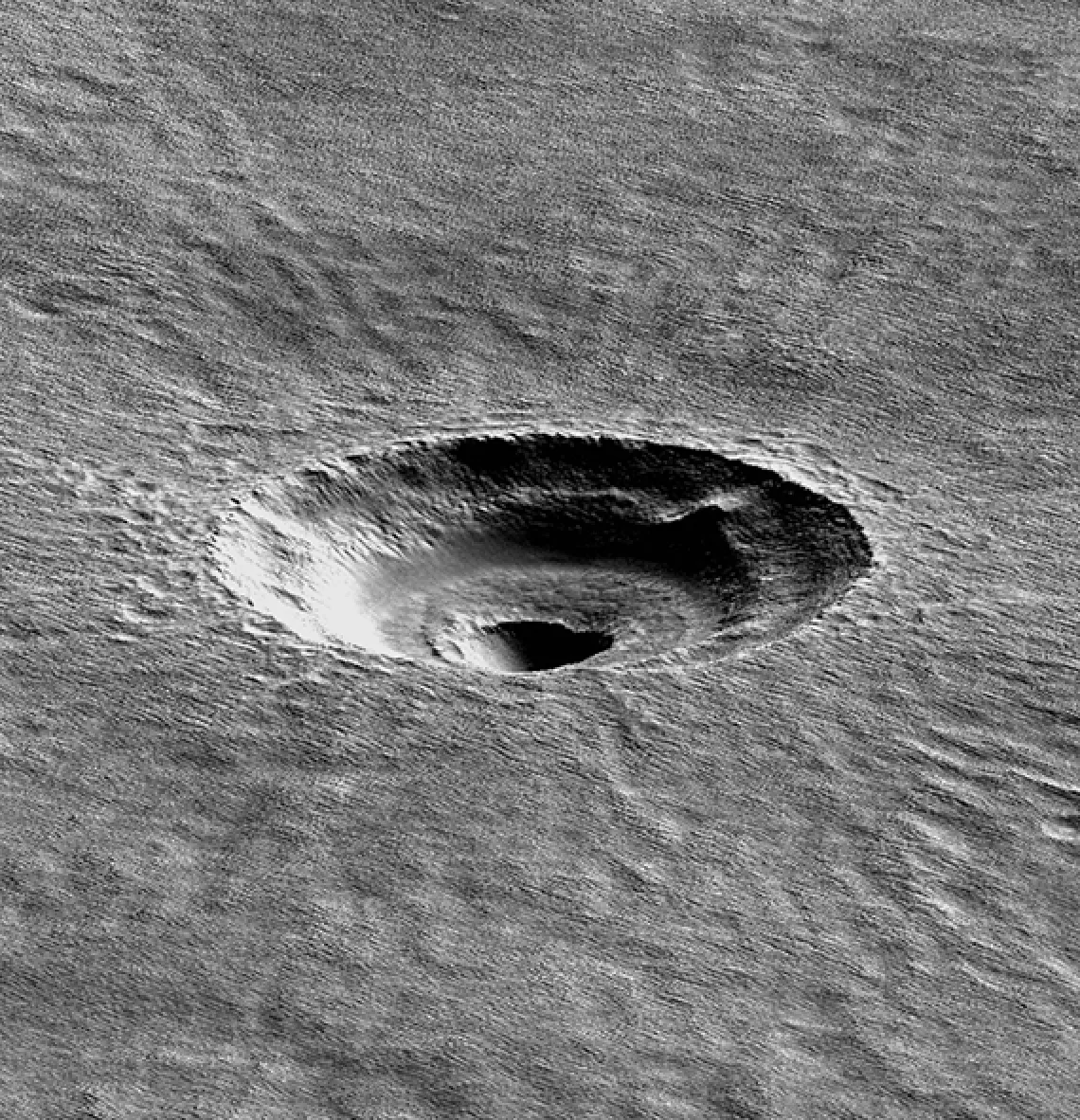Terraced Craters: Windows Into Mars' Icy Past

It was a "crazy-looking crater" on the face of Mars that caught Ali Bramson's eye. But it was a simple calculation that explained the crater’s strange shape.
Combining data gleaned from two powerful instruments aboard NASA's Mars Reconnaissance Orbiter, or MRO, Bramson and her colleagues determined why the crater is terraced — not bowl shaped, like most craters of this size.
"Craters should be bowl shaped, but this one had terraces in the wall," says Bramson, a graduate student in the University of Arizona's Lunar and Planetary Laboratory, or LPL.
Terraces can form when there are layers of different materials in the planet’s subsurface, such as dirt, ice or rock.
"When the crater is forming, the shock wave from an object hitting a planet’s surface propagates differently depending on what substrates are beneath the area of impact," Bramson says. "If you have a weaker material in one layer, the shock wave can push out that material more easily, and the result is terracing at the interface between the weaker and stronger materials."
"It’s worth mentioning that terraced craters of this size are quite rare," says Shane Byrne, associate professor in LPL. "But in this area of Mars (Arcadia Planitia), there are a lot of terraced craters. The craters may have formed at different times, but they all have terraces, which indicates something weird is going on in the subsurface."
Thanks to Mars' unstable obliquity — the degree the planet tilts on its axis — its climate changes often. Unlike Earth, Mars doesn’t have a large moon to keep it stable. Instead, it wobbles on its axis, and that wobbling leads to dramatic climatic shifts. Those shifts, in turn, have led to intermittent ice ages.
Using MRO’s High Resolution Imaging Science Experiment, or HiRISE, camera, which is operated out of LPL, the researchers created three-dimensional models of the area's craters, which allowed them to measure the depth of their terraces. The researchers then used MRO’s Shallow Radar, or SHARAD, instrument to beam radar pulses to Mars, allowing them to measure the time it took for the radar signals to penetrate the surface’s buried layers and bounce back.
Bramson combined the two data sets to measure the radar waves’ speed, a pivotal clue to the layers’ composition.
In this crater’s case, the layers turned out to be ice, and lots of it. Just beneath Mars’ dirt surface, or regolith, the researchers found an enormous slab of water ice, measuring 130 feet thick and covering an area equivalent to that of California and Texas combined.
The researchers' results were published online Wednesday in Geophysical Research Letters, a journal of the American Geophysical Union.
While the presence of ice came as little surprise to Bramson and Byrne, its age, amount and location did. Although scientists have known for some time about Mars’ icy deposits at its poles and have used them to look at its climatic history, knowledge of icy layers at the planet’s midlatitudes, analogous to earthly latitudes falling between the Canadian-U.S. border and Kansas, is something new.
"Knowing where the ice is and how thick it is can tell you about Mars’ past climates," Byrne says. "The fact that the ice is so thick and widespread leads us to think it came into place during one of Mars’ past climates when it snowed a bunch, ice accumulated, was buried, and then preserved.
"There have been a lot of climate changes between now and the tens of millions of years ago when we suspect the ice was put there. But it shouldn’t be stable today, and other past climates of ice instability in this region mean the ice should’ve sublimated away into the dry Martian atmosphere by now. So, that’s what we need to investigate.
"What kept the ice around all this time? There’s no climate model that we have now that explains this."

